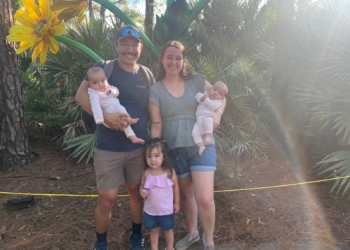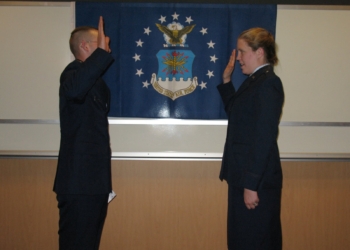A new exhibit highlights the service of chaplains across different faiths and nations.
“Sacred Service,” a 3,000-square-feet exhibit that opened at the National WWI Museum and Memorial in Kansas City, Missouri, earlier this year, is inspired by the untold stories of chaplains. It contains 240 objects in ephemera.
“We wanted to examine what the lives of people of faith looked like during World War I, specifically the lives of chaplains,” said Patricia Cecil, the museum’s specialist curator of Faith, Religion & WWI. “That was a story that really hadn’t been told yet, so we tried to bring this particular story to the public.”

Sacred Service doesn’t involve merely staring at artifacts behind glass, either. Thanks to the financial support of Lilly Endowment, Inc., the team was able to buy a 3D scanner. Museum visitors can examine every inch of a chaplain’s tunic, for example, using their smart phones. This way, attendees can closely study the eagle on the brass button or the tunic’s back.
“This also makes the exhibit accessible to people all over the world,” said Cecil, whose great grandpa fought in WWI. “In September, we’re debuting the digital companion exhibit, which will be free on our website to anyone, anywhere with a device and an internet connection.”
RELATED: Group captures spirit of Oregon’s World War II veterans
The five-year grant from Lilly Endowment is one of more than 40 given to museums, libraries and the like through its Religion & Cultural Institutions Initiative. The private philanthropic foundation, co-founded by a WWI service member, awarded a grant to the WWI Museum in 2020. Cecil and her team got to work on Sacred Service’s research and curation in early 2022.
“The aim of the initiative is to improve the public understanding of religion and to foster among public audiences greater knowledge of and respect for diverse religious traditions,” said Judith Cebula, Lilly Endowment’s communication director. “In furtherance of the aim of the initiative, Lilly Endowment is interested in learning how the Sacred Service exhibition informs and engages visitors in understanding the religious dimensions of historic and contemporary events, as well as the beliefs and practices of diverse religious communities, in the U.S. and around the globe.”
One important factor of chaplaincy that Cecil wants to emphasize through the exhibit is the many hats chaplains wore during the Great War. More than just spiritual advisors, chaplains often served as informal mental health and trauma counselors, athletic directors, librarians, gift givers and support group hosts.
“These chaplains saw the soldiers as human beings; they weren’t just cogs in the machine of war,” said Cecil, who names a rare LDS chaplain’s burial notebook as her favorite exhibit item. “I hope people can walk away being moved by these personal stories, that they observe the strength, courage, perseverance and selfless service these chaplains displayed, because those virtues can equip us to better endure life’s hardships.”
Nineteen biographical panels throughout Sacred Service’s sections tell the stories of individual chaplains, including those from Protestant, Catholic, Jewish and other faiths. Some of the stories are surprising, including an Anglican chaplain who lost his faith in God entirely during the war. Others felt called to specifically minister to the military members who really had no idea why they were fighting on foreign soil.
That’s the whole point of the exhibit, said Cecil: that these chaplains’ stories live on.
“If people walk away with new knowledge about World War I, with increased religious literacy and a new way of thinking about the world, we’ll consider the exhibit a success,” she said.











































